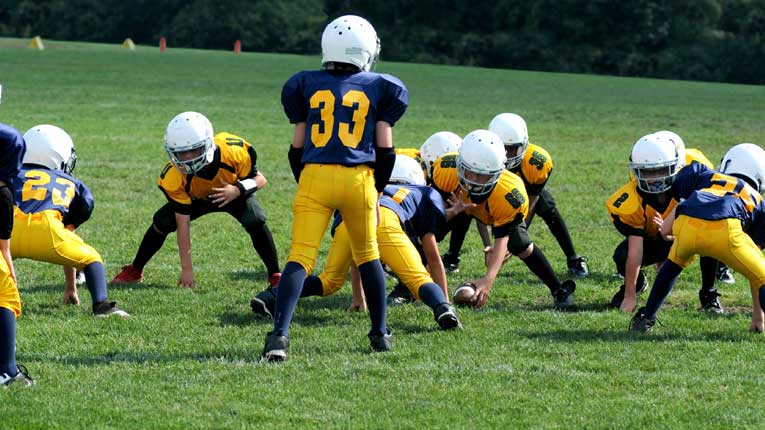The benefits of enrolling children in sports have never been more important. The up-and-coming generation is inundated with touch-screen enticements that don't provide them with the character-building and physical fitness assets they need in life.
While every parent wants the best for their children, the cost of youth sports continues to rise. Introducing youngsters to values such as cooperation, hard work, and self-discipline tasks parents with learning how to budget their way through the often expensive sports industry.
Things to Think About Before Picking a Sport
To say the costs of youth sports have risen in recent years would be something of an understatement. The average family spends nearly $700 per child for each sporting endeavor. Travel typically ranks as the largest expense of an industry that is expected to exceed $77.6 billion by 2026. And youth sports that require specialized equipment, recurring monthly memberships, and expensive facilities run into high costs per season.
Parents who want to expose their child to real-life activities must be cautious about the per-season costs. But knowing how to budget and make smart financial decisions can reduce stress and save you money.
7 Useful Tips on How to budget for Youth Sports Activities
1: Know the Total Cost Upfront
Before signing your child up for an extracurricular activity, make sure you can afford it. Some leagues charge excessively high fees, and you could be on the hook for out-of-state travel if the team makes the playoffs.
Consider building a spreadsheet with all the fixed expenses, as well as potential cost escalators. This process prepares you to pay the initial fees, buy equipment, purchase team photos, and it provides a road map of how to budget for the season. Then you can start looking for ways to reduce expenses and save money.
If you're looking for help creating your budget, check out our "3 Practical Budget Templates That Actually Work."
2: Buy Used Equipment
The more specialized equipment a sport requires, the more expensive participation becomes. Track and field tends to run on the low side because items such as running shoes and clothing are relatively inexpensive. But sports such as football and hockey run on the higher end of the spectrum. The equipment can be pricey, and youngsters outgrow them. That means finding seasonal replacements.
There are plenty of second-hand sporting goods stores that offer considerable discounts. Platforms such as Facebook Marketplace, eBay, Craigslist, and even Amazon list used sports equipment. Parents can also lean on community members whose children have outgrown their gear, and then pay it forward once their child finishes the season.
3: Ask For Discounts
Learning how to budget for youth sports comes with a learning curve. One of the things parents are often unaware of are the discounts that exist. For example, youth sports organizations generally offer a family discount when a second child signs up. It’s also not unusual for people who serve as volunteer firefighters, active military, veterans, and in other capacities, to enjoy a family discount.
That’s why it’s essential to check the organization’s platform and ask. If you don’t qualify for one of these discounts, consider using a credit card that offers rewards. The rewards you receive from using a credit card may help with some of the upfront costs.

4: Spread Out Your Purchases
Paying the signup fees and purchasing the necessary sports equipment can strain your family's budget. And on the heels of those expenses, the high cost of travel follows.
It may be more budget-friendly to put some or all of the upfront fees on your credit card. This allows families to spread out the cost of youth sports over a few months. This budgeting strategy also leaves you with the financial ability to handle travel expenses and go out for ice cream after games.
5: Carpool with Other Parents
The high price of fuel and other travel expenses are unpredictable costs that impact how much spending money families have. But the solution involves working with community members.
Consider meeting other parents during signups, youth sports gatherings, or during the first practice session. Exchange information with the goal of starting a carpooling system and helping each other out in a pinch. Some of the more proactive youth sports parents can create a private Facebook group to organize a carpooling schedule and post valuable cost-saving information.
6: Open a Youth Sports Savings Account
Everyday people open savings accounts for a number of reasons, including family vacations, retirement, emergency car repairs, etc. These are innovative ways to plan ahead — come what may — and youth sports expenses can be added to the list.
You may not know what sport your child will pursue next. But after a single outing, you’ll have a good idea about the upfront, travel, and hidden costs associated with it. By opening a savings account, you'll have the cash on hand to enroll your child without scrambling at the last minute.
7: Play One Sport Per Season
The enthusiasm of sports households sometimes leads families to overextend themselves. Coming off a positive youth sports experience, enrolling in more than one activity the following season puts more stress on people and budgets than anticipated. Shuttling kids to multiple practices and games on weekends stretches time and resources thin.
It’s important to take a step back and breathe. In the interest of keeping things lighthearted and fun for children and parents alike, consider a one sport per season family rule. It’s a blessing in terms of a positive experience and your monthly finances.

Creating a Successful Budgeting Plan May Require Help
Managing youth sports activities can be a full-time job, and we want to help parents feel prepared and not experience unnecessary stress when payments and costs come into play. Planning ahead, budgeting, and using smart financial tools can help you avoid added stress. A Peach State Visa Credit Card is the perfect tool because it allows you to spread out payments and regain control of your finances. You'll be able to take advantage of rates as low as 6.9% APR and 0% for six months on all new purchases and balance transfers.¹ This means you could essentially pay off your debt in those 6 months without paying any interest, freeing up your wallet without sacrificing your kids sports dreams!
If you have questions about budgeting or applying for a Peach State Visa Credit Card, contact us today!
1 APR – Annual Percentage Rate. The 0% introductory APR applies to purchases, cash advances and balance transfers. Offer applies to new VISA® credit card accounts only and may expire at any time; does not apply to account upgrades. If you are upgrading from a rewards card to a non-rewards card, then your points will expire at the time of the upgrade. The 0% APR is effective for the first six statement periods following the opening of your account. The APR will return to the annual percentage rate of your approved card type after the promotional period, or if you fail to make a minimum periodic payment during the promotional period within 60 days from the due date for that payment. Rates range from 6.9% to 14.9%. A $15 application fee is charged for processing. Subject to credit approval.




